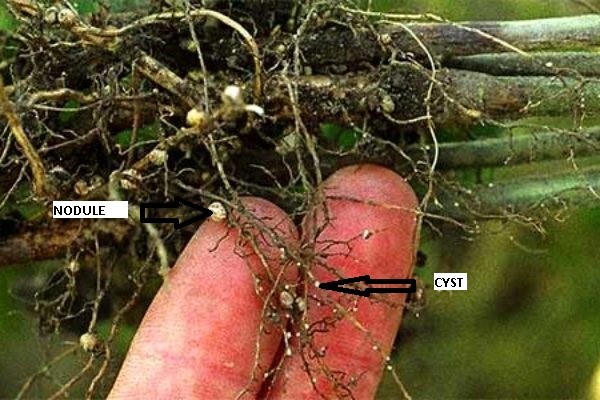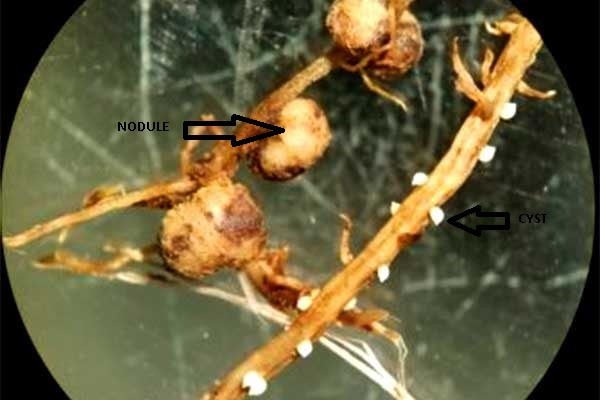We are seeing soybean cysts in fields more and more every year. This year we are seeing more wide spread stressed areas in soybean fields, which can be caused by a lot of different factors including the presence of SCN. Nematode damage can look like a lot of other stresses such as nutrient deficiencies, herbicides or soil compaction.
What is soybean cyst nematode?
A microscopic round worm that feeds on the roots and leaves lesions. The juvenile nematode that hatches from the egg is the infective stage of SCN. This is the stage that is enters the soybean root. SCN can complete up to six generations in the growing season.
This depends on the following:
- planting date
- soil temperature
- length of growing season
- host suitability
- geographic location
- maturity group of soybeans being grown
- management practices.
SCN cannot reproduce without a host plant. Conditions that favour soybean growth are favorable to SCN development.
The effect
The effect of SCN is on soybean growth and yield. The number of nematodes feeding on the root system will interfere with uptake of water and plant nutrients. Also, infection may also increase the incidence and severity of sudden death syndrome (SDS) and reduce nodule growth formed by the beneficial nitrogen-fixing bacteria.
The visual response will be stunted plants with chlorotic (yellow foliage). Seed yields are lower because fewer pods develop in infected plants.
SCN can cause yield reductions of 15 to 30 per cent on susceptible varieties that show no visible symptoms of nematode damage. For this reason, we encourage scouting and soil testing during the soybean year or in the rotation ahead of soybean planting.
Identifying SCS
There are two ways to scout for SCN.
- Dig roots and look for female nematodes. You will know it is a female if they are latched to the roots as shown in the photo’s below.


- Collect soil samples for testing. In a zigzag pattern collect 15-20 (or more) one inch-diameter cores, eight inches deep, for every 20 acres. The cores should be mixed well, and then put in a soil sampling bag to be sent to a SCN testing lab. Sampling can be done in any of the following situations a non-host crop, soybean stubble, spring before a soybean crop, or during the season in the soybean crop root zone.
Your Wanstead Farmers Co-operative and AGRIS Co-operatives have solutions to help combat the loss of yield from SCN infections ranging from tolerant varieties to seed treatments as well as a management strategy.Please feel free to contact us with any questions.
Source : Agris